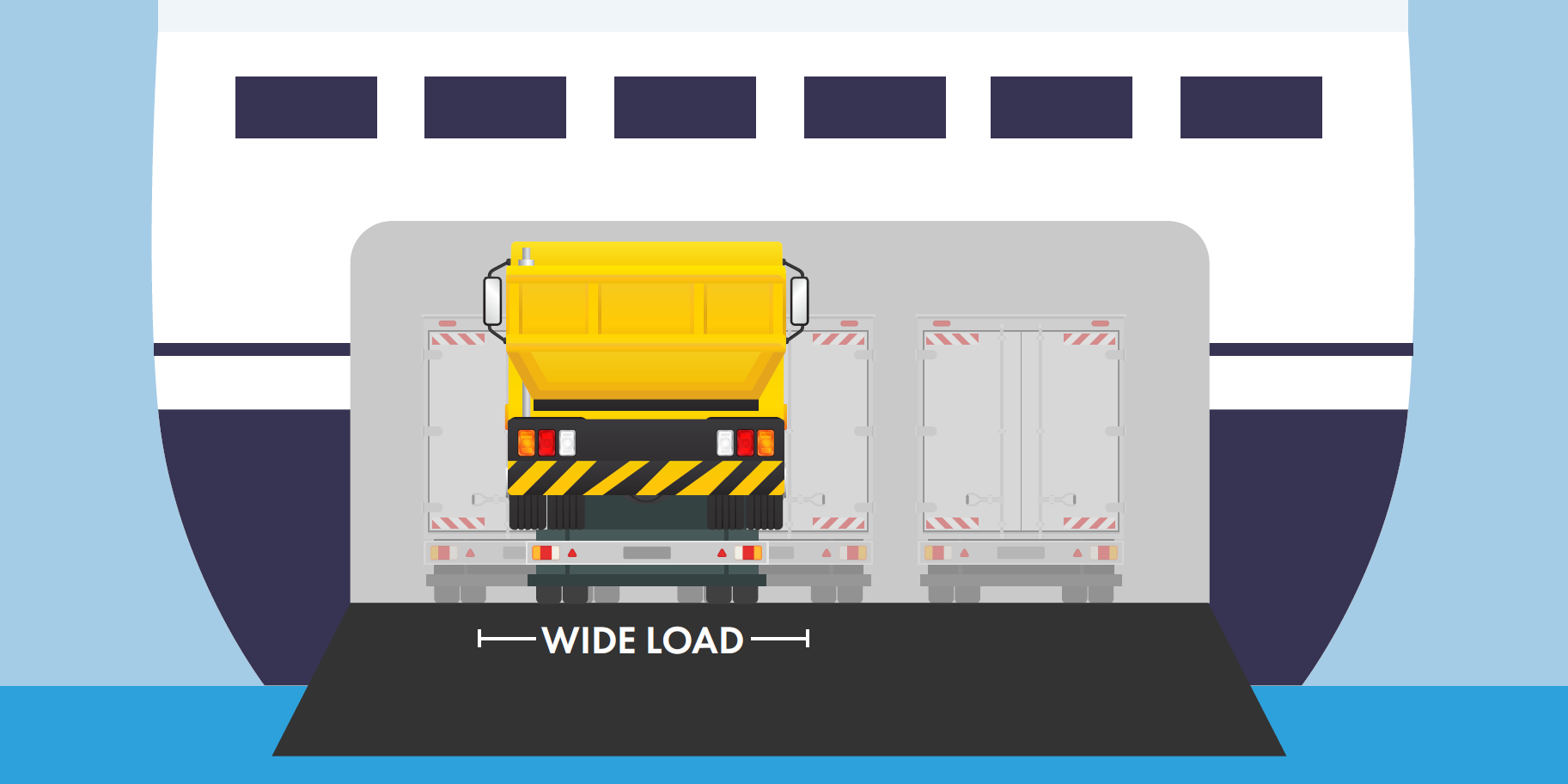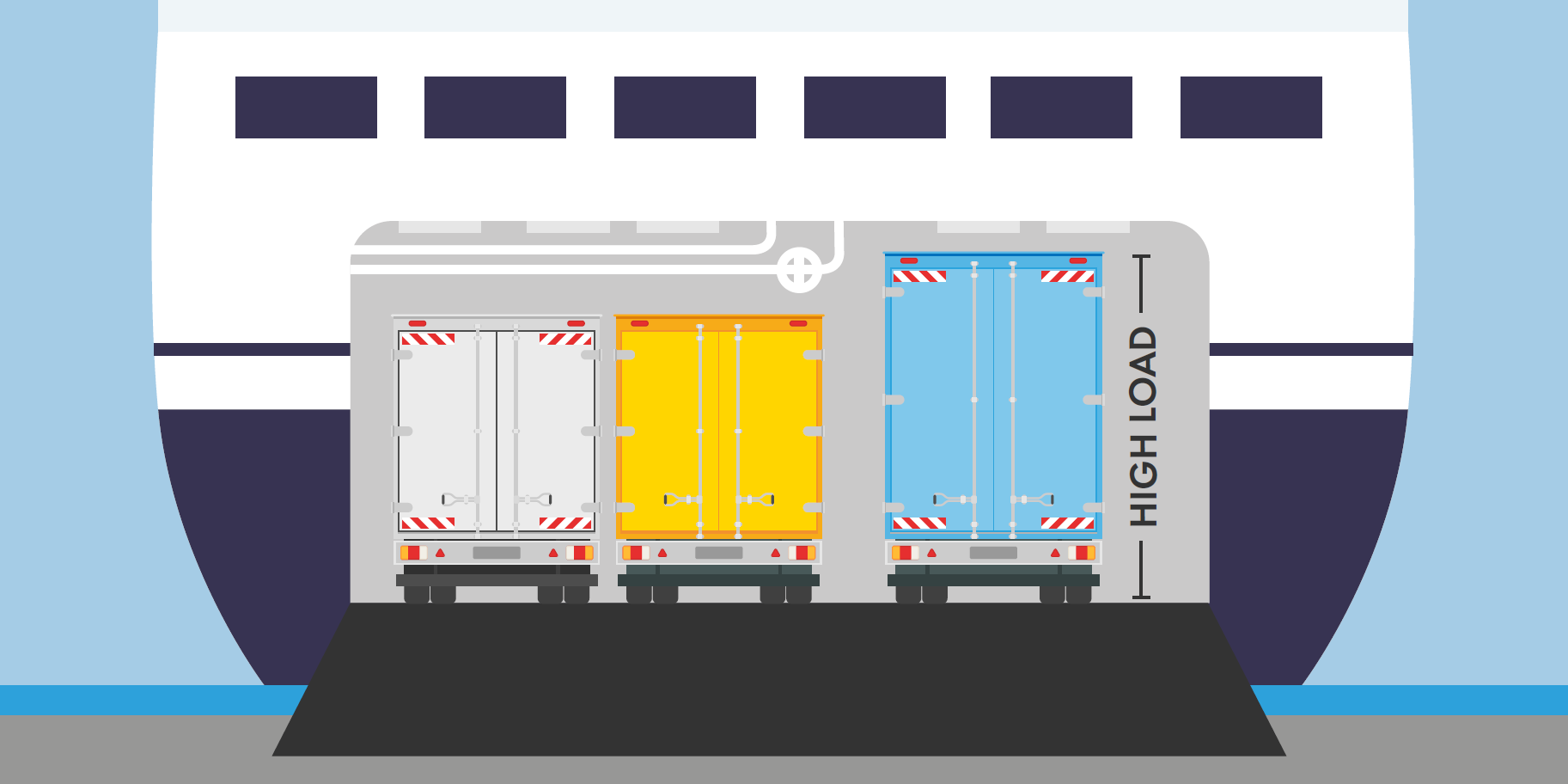
The size and weight of a vehicle can greatly affect the cost of a ferry booking. But do you know why?
Wide Loads
A standard trailer is around 2.5 metres wide. Wider loads are more expensive because they
- take up more slots on a ferry deck
- tend to have a slower loading time
- can only be loaded onto the main deck
High Loads
A typical HGV is around 4.6 metres high. Higher loads cost more to ship because they
- cannot go up or down ramps to access other decks due to floor and ceiling clearance issues
- might have to be put into specific locations on the ship, which reduces the flexibility for the the ferry operator
Heavy Loads
Different ships have different interfaces for trucks boarding. Each system has a different maximum weight and loading capability. Also boarding ramps have varying weight limits per axle, therefore the loading time and method will vary, effecting the time at which a ferry can be ready to depart and increasing the cost of the booking.
Tide Height and Larger Vehicles
Some ports have varying levels of tide. This can dramatically affects when loading can be achieved. Taller trailers with low clearance must take extra caution as there is a high chance that they will impact with the roof or floor.
If you are not sure whether your vehicle is affected by wide, high or heavy load restrictions, speak to our customer service team who will be happy help.






 United Kingdom
United Kingdom Republic of Ireland
Republic of Ireland Polska
Polska România
România Republica Moldova
Republica Moldova Deutschland
Deutschland Schweiz
Schweiz Österreich
Österreich Lichtenstein
Lichtenstein Belgien
Belgien Luxemburg
Luxemburg Magyarország
Magyarország Česká republika
Česká republika Slovenská republika.
Slovenská republika. España
España Italia
Italia Bulgaria
Bulgaria

















